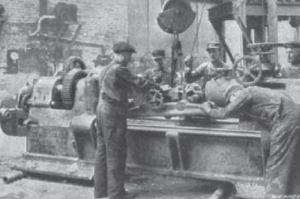FJsapper
Cast Iron
- Joined
- Nov 18, 2020
- Location
- Sterling Heights, MI
Good morning, have some weird questions that are way outside of my wheelhouse and I was hoping to get a common sense check.
Is there any merit to use a process such as friction stir to produce machine tool foundations? For example, if you had a 30’x20’x10’ print envelope you could print a lathe bed with integral headstock, but would the engineering properties be suitable for finishing out into a machine? Granted, there is a business case that must be made here, but at the moment I’m just trying to figure out if such a thing makes any sense at all. My understanding is that there are limited (single digit? none?) domestic manufacturers and casting houses that are actively producing machines in this size range currently, am I mistaken?
Is there any merit to use a process such as friction stir to produce machine tool foundations? For example, if you had a 30’x20’x10’ print envelope you could print a lathe bed with integral headstock, but would the engineering properties be suitable for finishing out into a machine? Granted, there is a business case that must be made here, but at the moment I’m just trying to figure out if such a thing makes any sense at all. My understanding is that there are limited (single digit? none?) domestic manufacturers and casting houses that are actively producing machines in this size range currently, am I mistaken?




